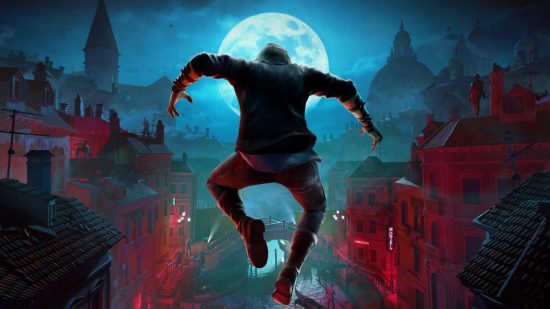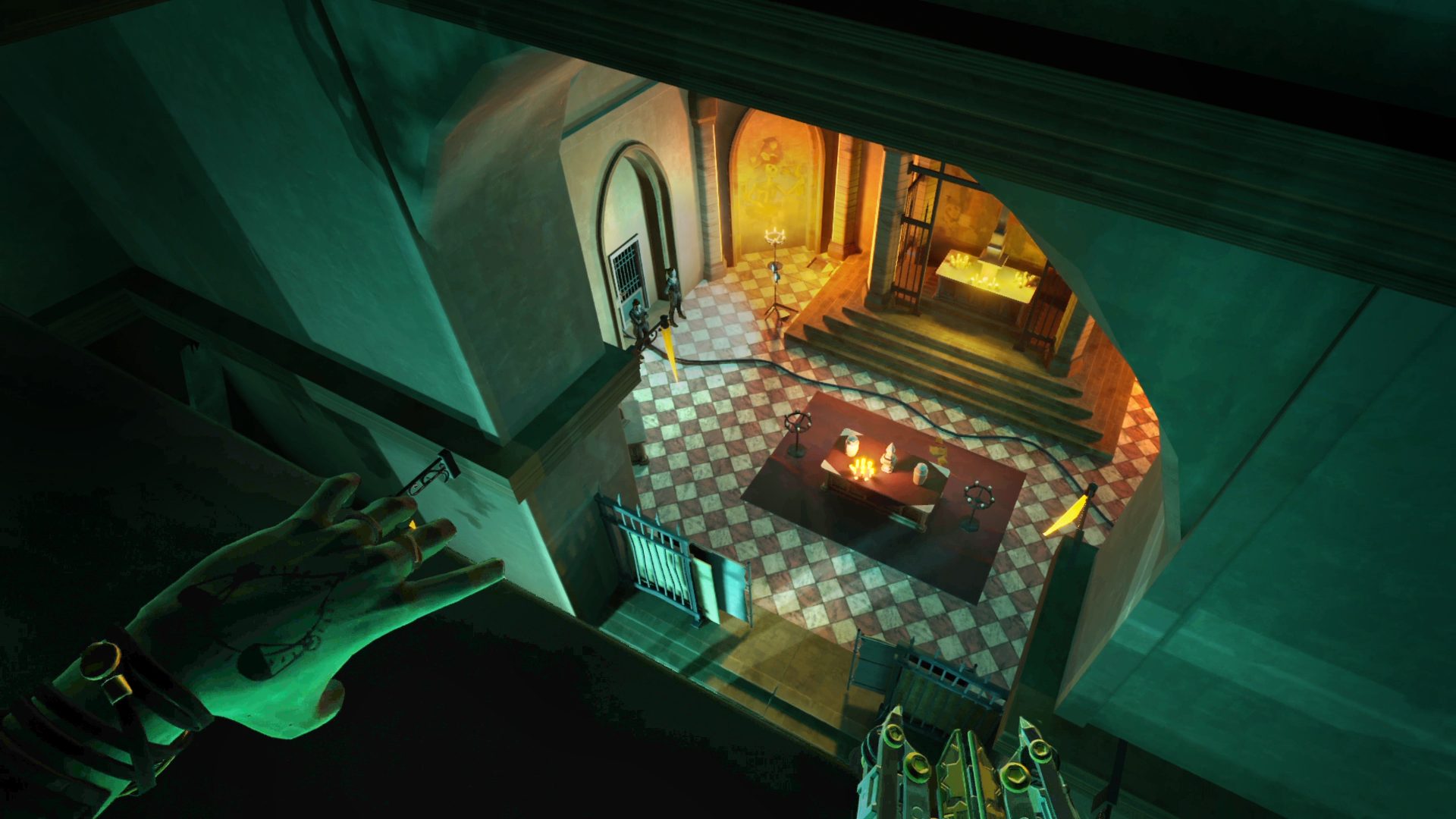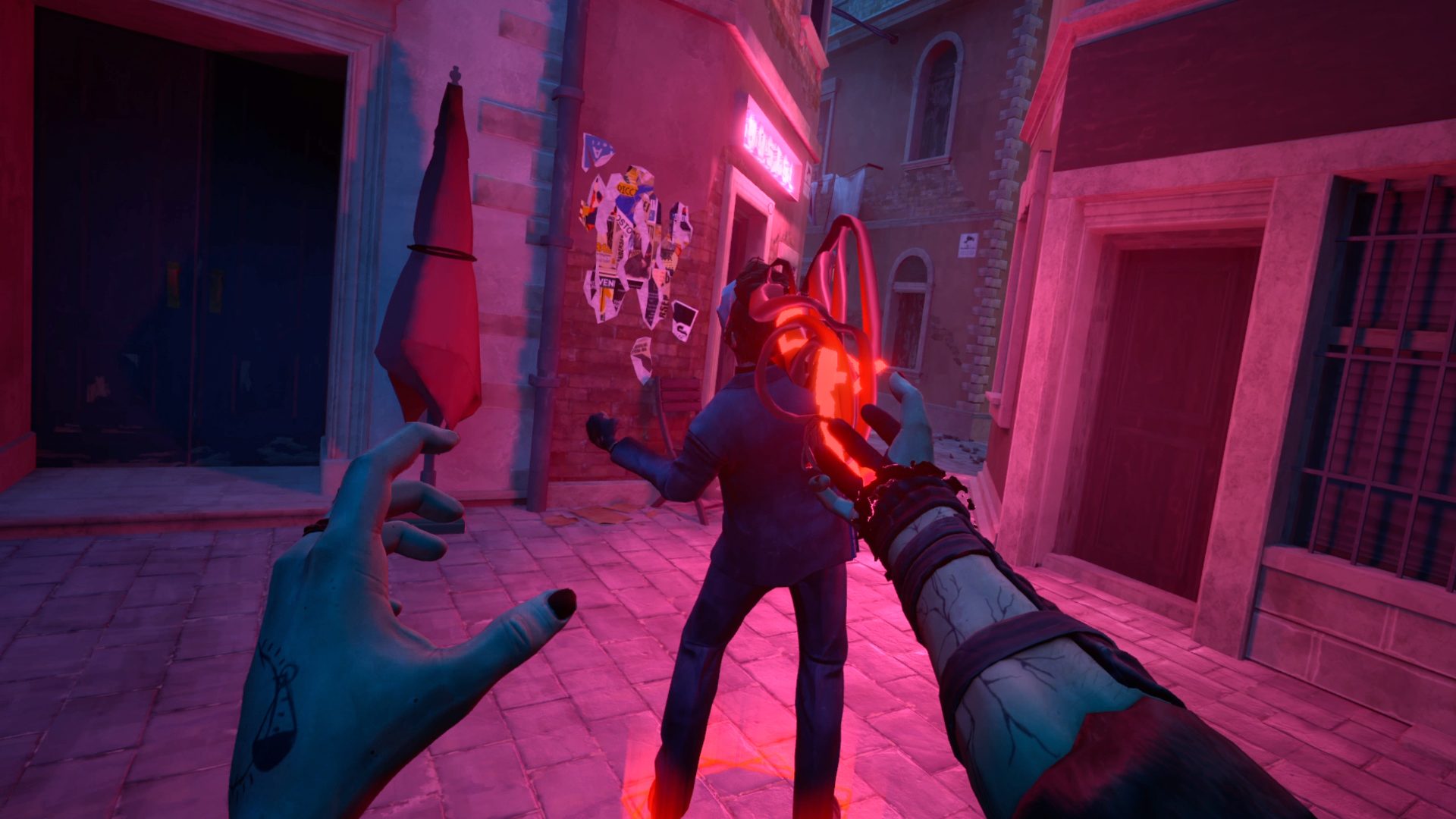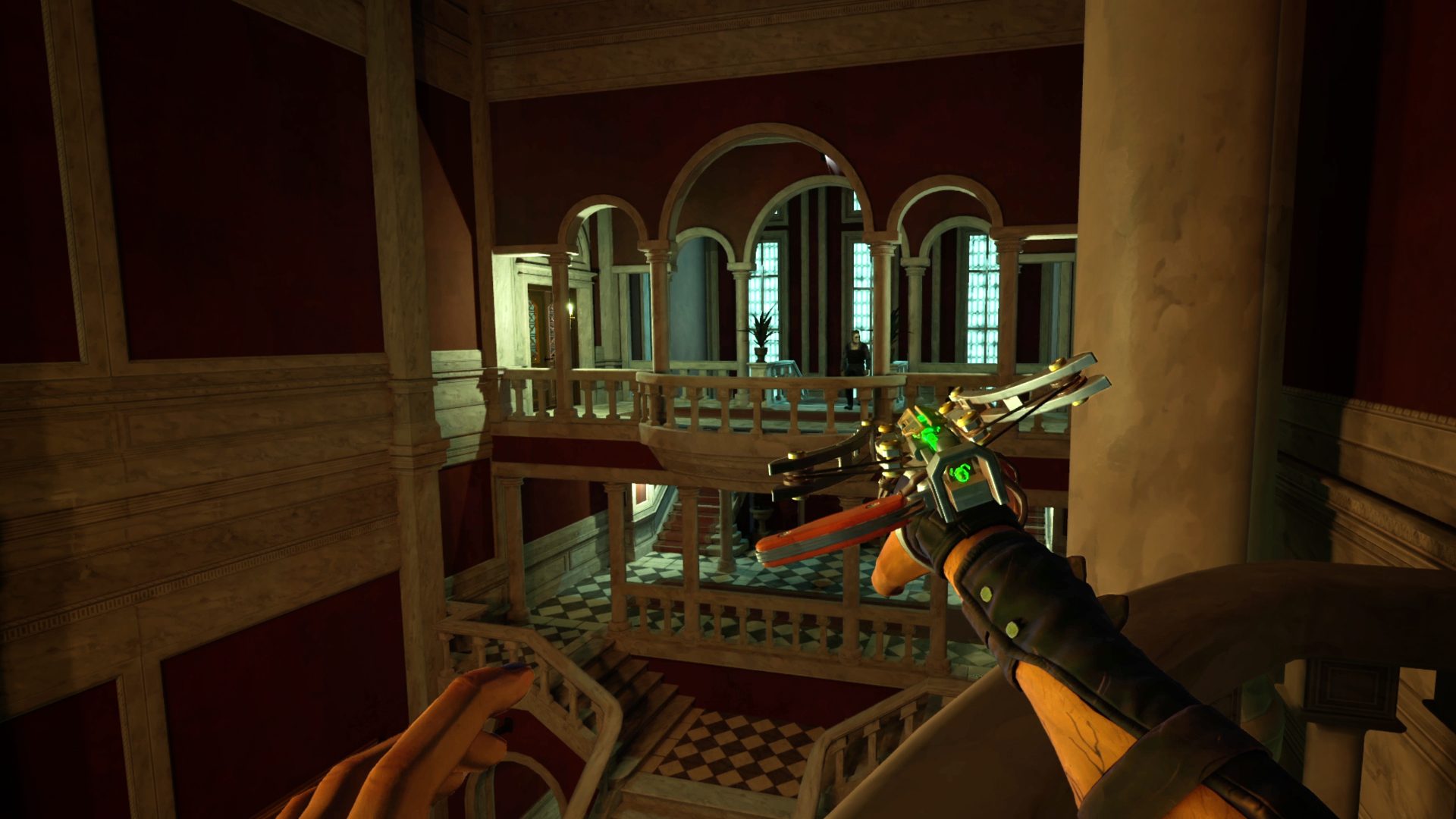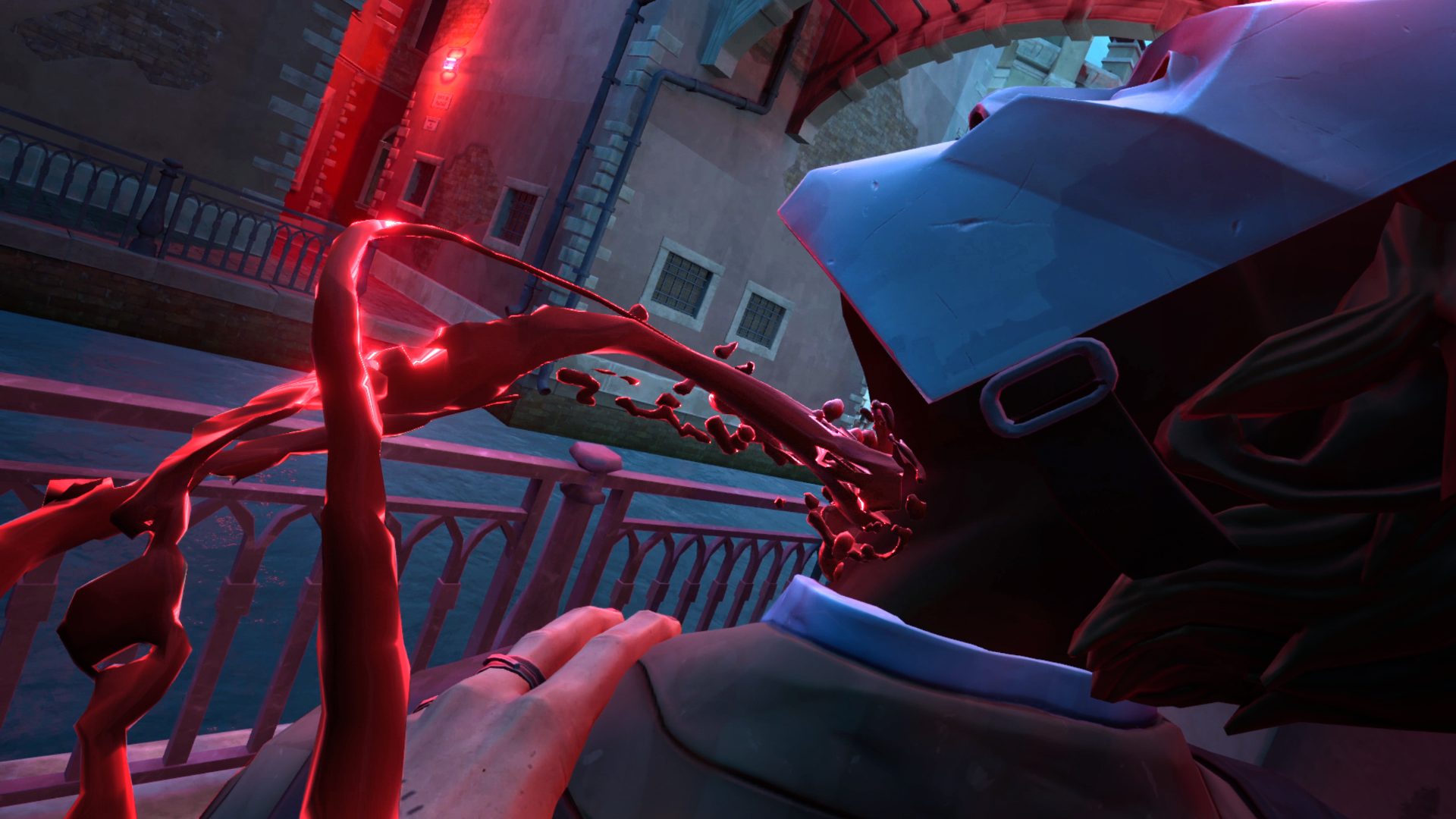Our Verdict
Vampire: The Masquerade - Justice serves up a strong story and world but is marred by repetition and occasionally confusing level design, which holds it back from achieving its full potential as an instant VR classic.
We’re on the precipice of a golden era of VR gaming, and Vampire: The Masquerade – Justice is similarly on the cusp of being another instant VR classic. Unfortunately, a great story and world are marred by repetition and occasionally confusing level design, as we delve into with our full Vampire: The Masquerade – Justice review below.
When I reviewed the Meta Quest 3, it was clear that it was an incredible VR headset that would require great games to take it to the next level. Vampire: The Masquerade – Justice is a game that I will be recommending to anyone with a Quest 3 or PSVR 2 because it’s a true display of what modern VR gaming is: full experiences with unique mechanics and no compromises on storytelling. However, it falls just short of greatness, despite some moments of magic.
VTM – Justice tells a completely new story in the World of Darkness as we eagerly await the Bloodlines 2 release date. You assume the role of the titular Justice who, following the murder of their sire, must track down a stolen relic in Venice, Italy. The story plays out nicely and remains engaging throughout, even with abundant exposition. VTM – Justice is an RPG at its heart, so the story matters, and this is just a showcase of how Fast Travel Games ensured no compromises were made to tell the story it wanted.
After a lengthy introduction mission, VTM – Justice begins to open up, giving you myriad ways to approach each mission. It’s a familiar principle that you may recognize from games like Hitman, but not quite on that scale. Every mission here is built around stealth. Trying to approach combat head-on is likely to end up in a reset, as just a few bullets from an enemy can kill you. Resets can take a while, so failing certain sections can be painful, but checkpoints are regular enough to counter this.
Justice develops skills over the course of the game that can help navigate any risky situation. There is a simple cloaking skill for a quiet yet merciful approach, or a ranged attack called Cauldron of Blood that drains targets before their heads explode. These are just two of the skills you unlock in the game, and XP is then used to improve them – and Justice – over the course of the adventure. The skills and equipment you use in the game are limited, as the game lasts around 15-20 hours for completionists, so your upgrades mainly relate to the skills that naturally unlock during the early stages of gameplay, including reducing the amount of blood it takes to create crossbow bolts.
The blood mechanic plays well into the game’s stealth system, as you can’t cheese your way through levels. It’s a meter that needs to be filled by feeding on enemies, rats, or mortals and is drained when you use abilities or create crossbow bolts. Granted, I had to crank the difficulty up to face a real challenge in combat, but there’s no issue with this, as finding a fair difficulty balance in VR is difficult. Comfort options are also expansive here, but I always recommend having as many turned off as possible for the smoothest experience. It can take time to build up a tolerance, and there were still moments when I became a little wobbly, but it’s worth it in the long run. Generally, the control layout is very intuitive, and there were no head-scratching moments when an action felt unnaturally placed.
The game’s depiction of Venice is no 1:1 replica, but it does pull on traditional Venitian architecture to create memorable – if hard-to-navigate – maps. One moment that comes to mind is during a mission in the sewers where you’re tasked with finding the former prison of Pietro, the Nosferatu. There are some navigation hints available through using your vampire senses, which are activated by holding the left trigger and moving your hand around, but at one point I was doing circles trying to find a key, and because it was so poorly signposted and didn’t come with a navigation prompt, I was left lost and frustrated for a good 15 minutes. Moments like this are rare, thankfully, but can’t be ignored.
I do have to note that the review build I was playing was not the final version of the game. While it did receive regular updates in the weeks leading up to release, it was often stated that any issues in this build would be fixed before launch. That remains to be seen at the time of writing.
Ultimately, I had a lot of fun with VTM – Justice. My issue is simply that the moment-to-moment gameplay was a bit repetitive. You’ll wander onwards towards the next mission marker, try to avoid or defeat enemies while they remain oblivious, then rinse and repeat. That being said, there are moments where environmental puzzles come into play and you really have to consider your next move. Combat is also fun if you allow it to be by cranking up the difficulty a touch.
I equally enjoyed how VTM – Justice told its well-paced story in an immersive way and didn’t just fall back on cutscenes. The conversation options never felt too important, but it was nice to be in control of Justice and their reactions to certain characters. There are moments where you can use a response type to get information quicker, and even intimidate key characters, but I would have liked more of this.
Vampire: The Masquerade – Justice is a strong VR game that will satisfy fans of the World of Darkness but isn’t quite the system seller it could have been. If there is more to come from VTM on VR, then I truly look forward to the refinements that Fast Travel Games could make, as the foundations are all there and it’s an IP that works surprisingly well with virtual reality. Justice, however, needed some extra touches and flourishes to push it into instant-classic category.
